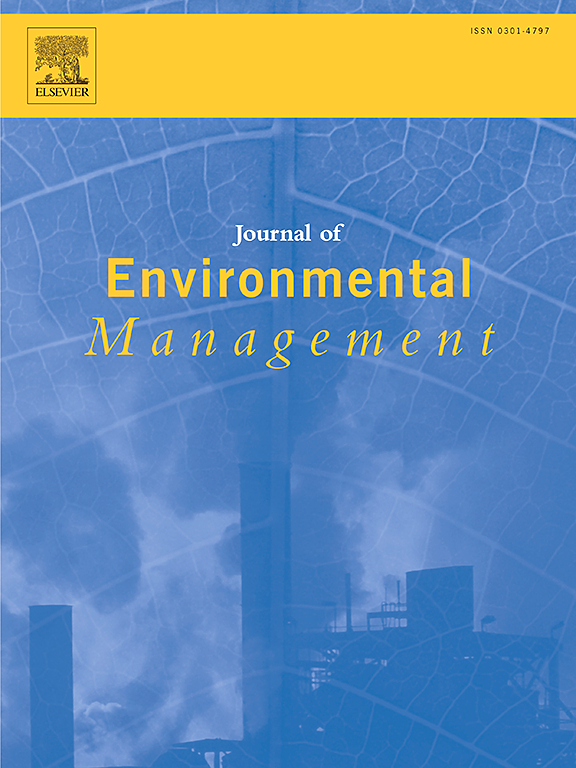Wastewater is still a major problem: a comprehensive evaluation of N and P loads into water bodies of the most populous state in Brazil
IF 8
2区 环境科学与生态学
Q1 ENVIRONMENTAL SCIENCES
引用次数: 0
Abstract
Nutrient pollution from wastewater systems, particularly nitrogen (N) and phosphorus (P), continues to be a major challenge in Brazil and other low- and middle-income countries (LMICs), driven by rapid population growth, industrial expansion, and urbanization, along with inadequate sanitation infrastructure. This study assessed municipal wastewater systems across all 645 municipalities in the state of São Paulo using the most up-to-date data available (from the Sewage Atlas, 2015–2016). Daily potential nutrient loads were estimated at 327.48 t (N) and 40.93 t (P). The 768 Wastewater Treatment Plants (WWTPs) mainly served small municipalities (≤50,000 inhabitants) in isolated, centralized systems. Stabilization ponds were common in municipalities with populations up to 100,000 inhabitants, while aerobic reactors and activated sludge systems dominated in larger municipalities. Most WWTPs operated below 80 % capacity utilization, with many medium/large plants below 70 %. Secondary treatment was most common, with average expected nutrient removal efficiencies of 56.5 % for N and 37.3 % for P. Due to low efficiencies and limited coverage (64.8 %), modest reductions in residual loads were observed (36.9 % for N and 25.2 % for P). Despite the statistically significant difference between potential and residual loads, substantial discharges into receiving water bodies (206.53 t N and 30.60 t P daily) persist, leading to frequent exceedances of regulatory standards. These findings highlight the need for comprehensive strategies to expand wastewater treatment coverage and efficiency, and mitigate pollution from untreated and non-point sources.
废水仍然是一个主要问题:对巴西人口最多的州水体中氮和磷负荷的综合评估
在人口快速增长、工业扩张和城市化以及卫生基础设施不足的推动下,废水系统中的营养物污染,特别是氮和磷污染,仍然是巴西和其他低收入和中等收入国家面临的主要挑战。本研究使用最新数据(来自2015-2016年污水地图集)评估了圣保罗州所有645个城市的城市污水系统。日潜在养分负荷分别为327.48 t (N)和40.93 t (P)。768个污水处理厂(WWTPs)主要以孤立的集中式系统服务于小城市(≤50,000居民)。稳定池在人口达10万的城市中很常见,而好氧反应器和活性污泥系统在较大的城市中占主导地位。大多数污水处理厂的产能利用率低于80%,许多中型/大型工厂的产能利用率低于70%。二次处理最常见,氮和磷的平均预期养分去除效率分别为56.5%和37.3%。由于效率低和覆盖范围有限(64.8%),观察到残留负荷的适度减少(氮和磷分别为36.9%和25.2%)。尽管潜在负荷和剩余负荷之间存在统计学上的显著差异,但大量排放到接收水体(每天206.53吨氮和30.60吨磷)持续存在,导致经常超出监管标准。这些发现强调需要制定综合战略,以扩大废水处理的覆盖范围和效率,并减轻未经处理和非点源的污染。
本文章由计算机程序翻译,如有差异,请以英文原文为准。
求助全文
约1分钟内获得全文
求助全文
来源期刊

Journal of Environmental Management
环境科学-环境科学
CiteScore
13.70
自引率
5.70%
发文量
2477
审稿时长
84 days
期刊介绍:
The Journal of Environmental Management is a journal for the publication of peer reviewed, original research for all aspects of management and the managed use of the environment, both natural and man-made.Critical review articles are also welcome; submission of these is strongly encouraged.
 求助内容:
求助内容: 应助结果提醒方式:
应助结果提醒方式:


